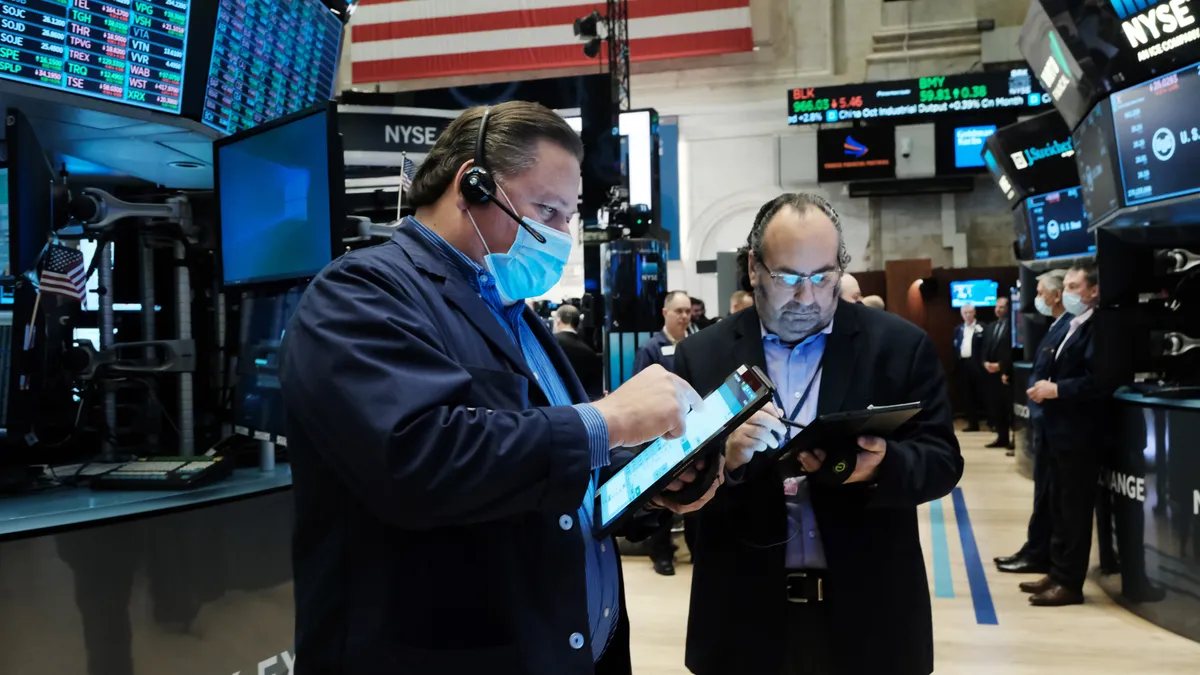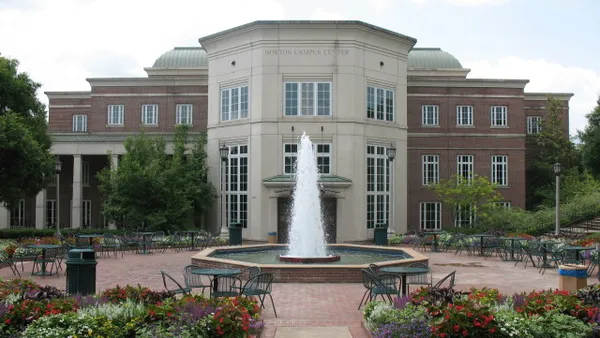Dive Brief:
- Growing pressures from inflation are likely to translate into higher operating costs for colleges, most of which will not be able to compensate by raising tuition, according to a report from Fitch Ratings.
- Colleges will likely see higher costs for supplies and labor in 2022, Fitch projected. Most will be able to absorb increases because they saw relatively limited expense growth in 2020 and 2021. But their cushions will fade beyond the current fiscal year as they use up COVID-19 relief funds from the federal government.
- The conditions are expected to pose the biggest challenge for institutions that already have limited financial flexibility.
Dive Insight:
Fitch's report covers a range of post-pandemic conditions in the U.S. higher ed sector. It came out Thursday, even as several datasets show some colleges beset by enrollment challenges and others boosted by expectation-shattering endowment performance.
Overall higher ed enrollment fell 2.6% this fall as a rising number of graduate students failed to offset declines among undergraduates, according to the latest preliminary data from the National Student Clearinghouse Research Center. Undergraduate enrollment fell across the higher ed market, but declines were sharpest at four-year for-profit institutions and community colleges.
That comes after international enrollment plunged by 15% in the 2020-21 academic year, per the annual Open Doors report. But a survey of institutions found fortunes beginning to change, with total international enrollment ticking up 4% this fall. International enrollment is critical for some colleges' bottom lines, as students from overseas tend to pay the full cost of tuition more often than others.
Meanwhile, U.S. college endowments reported their strongest returns in about 35 years, with a 27% median return before fees for the year ending in June, according to Wilshire Trust Universe Comparison Service.
Against that backdrop, Fitch's report suggests gaps are widening between different colleges' financial performance. Less-wealthy institutions aren't likely to enjoy the same high endowment returns as their better-off competitors. Small investment portfolios have tended to be weighted more heavily toward fixed-income assets, which experienced lower returns compared to broader portfolios, according to Fitch.
Market pressures have generally weighed more heavily on colleges with bond ratings at the lower end of the spectrum, the ratings agency found. It described those with few financial reserves as most vulnerable to financial deterioration, consolidation or closure.
Projected declines in the number of U.S. high school graduates through 2035 are also likely to play out unevenly. Drops will be concentrated in about 20 states, Fitch noted. Competitive top-choice colleges aren't likely to experience substantial enrollment volatility. Many of those drawing students locally, however, "will bear a disproportionate share of these demographic pressures," the report said.
Fitch projects colleges to continue having little power to raise tuition. It is tracking increases between 1% and 2% this academic year — meaning real tuition declined after adjusting for inflation. Looking ahead, colleges could turn to increasing fees for activities, support services and auxiliaries.
A positive for colleges is that many curbed their expenses during the pandemic.
"The sector experienced a sizable contraction in labor, as well as a significant curtailment of other operating and capital expenditures in early planning for the 2020-21 academic year, which carried over into the current academic year," the Fitch report said. "As some of those expenses phase back in, particularly those related to direct student services and housing, there should be some cushion for stable operating budgets in fiscal 2022."
Looking ahead, the ratings agency is watching how remote learning will change the sector, whether relatively strong state financial conditions translate into more funding for higher ed, and how proposed federal policy changes unfold, such as proposed increases to the maximum Pell Grant award.















